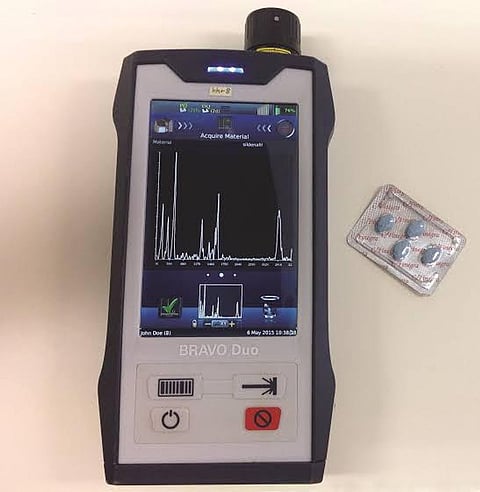
- Home
- न्यूजग्राम
- NewsGram USA
- India
- World
- Politics
- Entertainment
- Culture
- Lifestyle
- Economy
- Sports
- Sp. Coverage
- Misc.
- NewsGram Exclusive
- Jobs / Internships

You may have heard about spectrometers, but you don't have a clear clue about them. Well, spectrometers are scientific instruments mainly used at the laboratories in the separation and measurement of spectral components. Spectrometers are broadly known to identify devices that measure continuity of a variable where the spectral components are mixed up.
In daylight, a spectrometer works incredibly by separating white light and measure separately each belt of colors, commonly known as the spectrum. On the other hand, a mass spectrometer measures the masses of different bands of color present in molecules of different gases.
Lots of researches have shown that spectrometers were developed during the early studies of physical science, chemistry, and astronomy. They were mainly designed to determine different aspects such as chemical composition which eventually advanced and continued to be one of its primary uses in spectroscopy.
Astronomers used spectrometers to analyze the chemical composition of stars and planets, and still use them to collect data on the origin of the universe. Portable pharmaceutical analysis is also great for analyzing pharmaceutical products.
Examples of spectrometers used in the chemical analysis are discussed below. You will get to understand how they separate particles, molecules by their masses or even velocities.
The optical spectrometer also known as a spectrograph is used to measure aspects of light over specific electromagnetic spectrum that used in the spectroscopic analysis of identifying certain materials.
At optimal spectrometer, a spectrum of light is emitted by the deuterium lamp at the electromagnetic frequency especially near the infrared part.
These spectrometers serve a specific function of indicating the intensity of light as a frequency function.
These spectrometers serve a specific function of indicating the intensity of light as a frequency function. A deflection is also produced here either by diffraction in a diffraction grating or by refraction in a prism.
If you wish to employ the principle of optical dispersion, optical spectrometers are the best for you. The light produced comprises of a continuous spectrum, emission spectrum commonly known as bright lines and an absorption spectrum also known as dark lines. No regrets because each element will have its spectral signatures in form lines, therefore, easy to identify the object under spectral analysis.
A mass spectrometer is used in the identification of the present chemical and the amount in a specific sample. This identification is made by measuring the mass-to-charge ratio and the frequency of the gas-phase ions.
Time-of-flight spectrometer measures the energy spectrum of particles of known masses. The known masses are measured by determining the time of flight between two detectors in a time-of-flight spectrometer. On the other hand, masses can be identified in a time-of-flight spectrometer if the velocities are known.
The magnetic spectrometer is an experiment module mounted on the International Space Station to detect cosmic rays' antimatter. The collected data is crucial to understanding the formation of the universe.
The magnetic spectrometer acts in a way that a positively charged particle will be moving in a circle under the influence of Lorentz force. Immediately a fast charged particle enters a constant magnetic field at right angles it is diverted into a circular path due to Lorentz force.
Thanks to technology where you can now perform your spectral composition at your own comfort. With the portable spectrometer, your experiments are made easier whenever you want because you don't have to go to the laboratories to do your tests as long as all you adhere to all the conditions.
